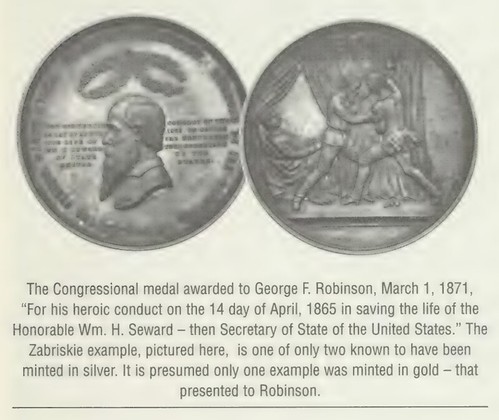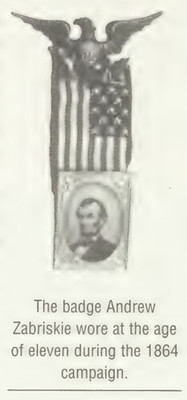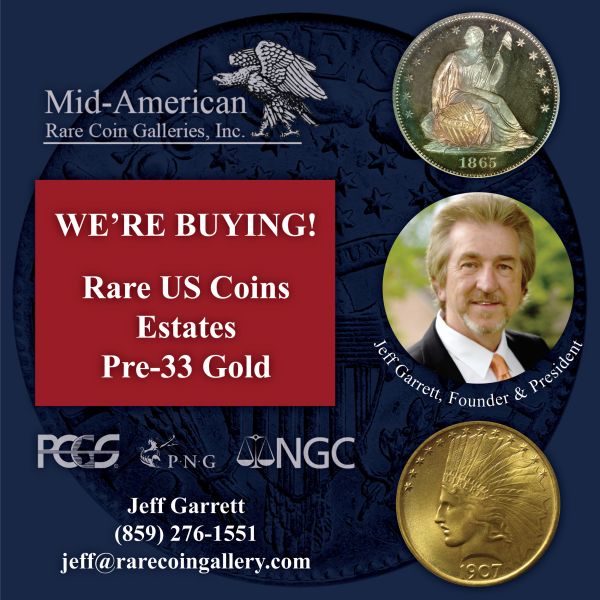
PREV ARTICLE
NEXT ARTICLE
FULL ISSUE
PREV FULL ISSUE
V25 2022 INDEX E-SYLUM ARCHIVE REDISCOVERING THE ZABRISKIE COLLECTIONThe July 1999 issue of The Rail Splitter has a sidebar article by David E. Tripp about the 1999 discovery and sale of important remnants of the Andrew Zabriskie collection. With permission, we're republishing these here. -Editor David E. Tripp, Special Consultant and former Director of Sotheby's Coin Department, cataloged the Zabriskie holdings. We asked him to recount how he personally "rediscovered" the whereabouts of that collection. In early January of this year, I received a call from an old acquaintance with whom I had worked years ago, and for whom I had recently given some informal advice on a completely unconnected issue. She informed me that her father had recently died, and that her mother had inherited a collection of medals relating to Abraham Lincoln. Would I be able to go and have a look and give her mother some idea of what the materials might be worth. Needless to say, I was more than happy to do what I could. "Oh, by the way," she asked, "have you ever heard of Andrew Zabriskie?" That stopped me. Of course, to a numismatist Captain Andrew C. Zabriskie's collections of coins, sold by Henry Chapman in 1909, was one of the greatest cabinets of American coins to ever come to auction. It included an example of America's most famous coin, the Brasher Doubloon. (Ironically that piece recently changed hands for nearly $1,000,000, and at Sotheby's a few years earlier, as part of the Bloomfield Foundation Collection, we had sold another coin from Zabriskie/Chapman for $165,000). Chapman was a landmark sale. Over the weekend I looked at a tattered old copy of the Chapman sale catalog which I own, and noticed that while there was a great deal of political material, there was little if any material related to Lincoln. His Indian Peace Medals were virtually complete...less Lincoln. In checking the Lincoln Bibliography, I notice that he had published on the subject in 1873, and so was intrigued. I confess I had no idea that Captain Zabriskie was one of the early titans of collecting politicals, as well as coins. The collection was laid out in a few shoe-boxes. Many pieces were simply wrapped in tissue paper. Some had at some point been slipped into old plastic sleeves. As each piece emerged from its cocoon, the importance of the holding began to reveal itself. Certainly when the Lincoln Peace Medal was unwrapped, I was astounded. It was the most perfectly preserved Lincoln I had ever seen (and I have been reliably informed that it may well be the single most perfectly preserved Indian Peace Medal of any president). Even uneducated in the secrets of the politicals market, the array of 35 ferrotypes was memorable. As the extent of the collection became apparent, I idly asked if there was any more. Indeed there was, in the upstairs closet, in a suitcase. This, upon retrieval, contained many of the storecards from New York was well as the extraordinary run of Civil War tokens. In the end, the owner, a delightful lady, simply instructed us to take it away. As it was being receipted, I asked about how it had been retained intact for all these years. It transpired, that in 1951, the family gave Captain Zabriskie's home, Blithewood, together with 1,000 acres to Bard College, up the Hudson River. The weekend before the closing, the husband of our consignor (Zabriskie's grandson) received a call from his brother, and was told that the closing was to be the following Monday, and that if there was anything in the house he wanted, to come up on Saturday and take it away. They went up to Blithewood and discovered the long-forgotten family safe, door sealed, combination unknown. They were confident that nothing of value remained in their grandfather's old safe, but decided at the last minute to have it drilled to make certain that personal, family papers were not left behind. To everyone's amazement, within was the collection, not only of Lincoln medals and storecards, but also the Captain's collection of Polish coins, which the family later donated to the Smithsonian Institution. While I had some idea of what we were into, the size and importance of the collection was a most pleasant surprise. When we had got it all into some order, several specialists came to have a look. I was delighted that their reaction was similar to mine. As some of the great rarities came to light it was as if they were gazing on the Grail. A delightful experience indeed. The Zabriskie holding is the rare survival of a wonderful "first generation" collection, and one can rest assured that the new owners will derive as much pleasure from their new purchases as did the Captain more than a century ago. MEANTIME, AT THE AUCTION...
They began arriving an hour before the sale. A small group
of dealers gathered in a corner, speaking in sentences inaudible
to those seated only a few feet away. Within a few minutes, a
Sotheby employee gave the signal that bidders could go upstairs
and register. Passing by rows of European
paintings stacked at all angles in preparation for an upcoming sale, the
communicants slowly made
their way towards the registration desk. This was the
auction; many bidders
were
Past a narrow corridor lay
the main sales room. The scene was a familiar one, comprised of
neatly-arranged rows of folding chairs, banks of telephones, and
a pulpit-like auctioneer's podium. Draperies
were drawn around the sides and rear of the
staging area, creating a private enclosure
void of distractions. An electronic display board was operating with instantaneous displays of the current high bid
for each lot, along with foreign exchange
conversions in most major currencies.
The board, and its unseen master controller, sometimes would fall in arrears. This
was brought to the attention of auctioneer David Redden who
discounted the glitch, wryly commenting that
After a great deal of anticipation, the
A composite of the audience: an elderly
man and his grandson who apparently did not
do any bidding; a gentleman who was bidding as agent
for Q. David Bowers; Seth Kaller; the
Even though it came as no surprise, the strong across-the-board prices were bewildering to several seasoned collectors.
The blockbusters lived up to their advance-billing. The perpetual calendar sold to an absentee bidder for $35,000 plus ten-percent buyer's commission, a record for a ferrotype portrait
Lincoln campaign badge. Auctioneer Redden disclosed he had
four absentee bids at the $11,000 level. The Lincoln-Hamlin
doughnut which one collector disparaged because it lacked its
suspension loop, sold to someone more discerning for $10,000.
The largest size Lincoln ferro from 1864, which a savvy dealer
thought to only take to the $3,500 level, soared to an astounding
$17,000. Considered one of the choicest examples of an Indian
Peace Medal extant, the Lincoln specimen in silver went within
estimate at $24,000 - quite a surprise given how few items went
at anything near the estimates. The Wide Awake hat badge, the
The George F. Robinson
Life Saving Award medal in silver,
given to the hero who thwarted the
assassination of Sec. Seward the night of the Lincoln murder,
also one of only two known, was less appreciated at $13,000.
Proving time and again that provenance and the Zabriskie name
carried huge cachet value, the Rail Splitter Progress medal in copper sold for $2,250
— despite a comparable example selling in Joe Levine's sale of the
McSorley collection last year for a
healthy $400. A Lincoln-axe brooch
made the
It appeared that five
At sale's end, the consignor
exclaimed Steve Tannenbaum's partner was Richard Rossa ("the big guy") - see the earlier article for more information. -Editor
For more information on The Rail Splitter, see:
To read earlier E-Sylum articles, see:
Wayne Homren, Editor The Numismatic Bibliomania Society is a non-profit organization promoting numismatic literature. See our web site at coinbooks.org. To submit items for publication in The E-Sylum, write to the Editor at this address: whomren@gmail.com To subscribe go to: https://my.binhost.com/lists/listinfo/esylum All Rights Reserved. NBS Home Page Contact the NBS webmaster 
|


